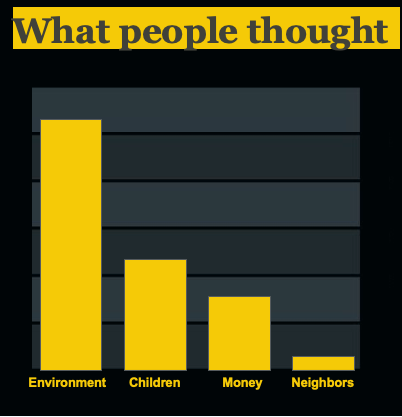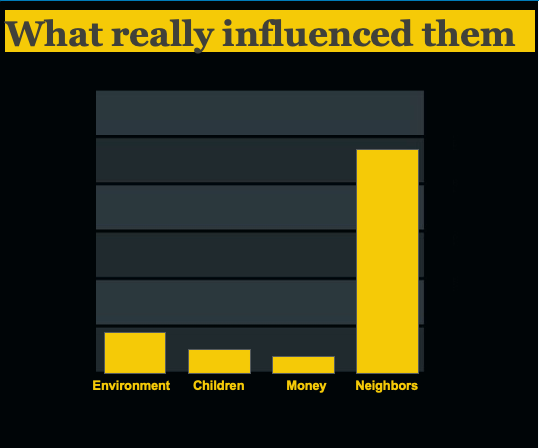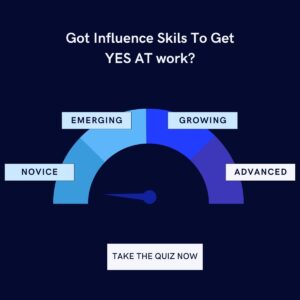Influencing and convincing is a constant activity. In work, are seeking to influence and convince clients, team members, and management and others are seeking to convince us and we are trying to influence ourselves.
All the influences, and convincing are successful only when it is reflected in our behaviors. So, it is not just about saying YES but also it must show up in the behavior.
A study revealed that once a person moves up in ladder to manager and above, on average he or she is spending 40% of their time in convincing persuading, and influencing.
This means he wants to influence to change others behaviors. So this raises a critical question, that rarely gets asked,
How well do we understand the factors of influence and resulting in a behavior change?
Do we make our decisions in a rational/thoughtful way always or in a mindless way?
I am sure we all have experienced in our lives when said YES to an ad or promotion & went ahead, bought the product and later wondered why did I do this. It all seemed to happen mindlessly.
Even many times we seem to think know on what we get influenced, but our actions are not inline with wha we say!
Here is an interesting study that gives the idea that we don’t know what influences us!
Homeowners in a California county were asked what message would most influence them to reduce their energy consumption.
These were the four messages they could choose from:
- Conserving energy helps the environment
- “Conserving energy helps future generations”
- “Conserving energy saves money”
- “Your neighbors are already conserving energy”
This is the data on what message homeowners thought would most influence them to conserve energy..

Fortunately, the researchers also measured which message influenced homeowners the most.
They did so by placing door hangers containing one of the messages each week for a month on residents’ doors and then measured actual energy consumption during the month.
This was the energy reduction result:

More than 80% who conserved energy had followed the message Your neighbors are already conserving energy.
So, the messages that the homeowners rated as most important had hardly any impact. The only message with real impact was the one they dismissed, the one describing their neighbors’ conservation efforts.
The message here is,
People don’t know often what influences their decisions and even subsequent behavior
Then how do we make decisions?
The Decision-Making Psychology: Power of Mental Shortcuts/Mindless way
This brings us to the heart of decision-making psychology:
Though humans are intellectually superior, our decision-making often parallels that of other species, driven by the need for survival.
Our mind is habituated to make decisions using shortcuts because in nature this is what helps us survive.
When crossing a street and a speeding biker comes, it is the auto-pilot decision to jump immediately that helps survive. At this time, reasoning or thinking will delay the jump and the chance of getting hit is higher!
But these shortcuts extend beyond life-threatening scenarios. Shortcuts come in many ways such as if our vehicle malfunctions we can spend months learning about its various vehicle components and how they can be fixed—or we can ask a mechanic.
If we require new software or to hire a resource, we can search on Google, and job portals for hours or ask people in the known community to refer someone. We also look for social proof and other recommendations to make sure it is fine before we speak to a person.
So mental shortcuts are efficient, help us when we lack time, save mental effort as we don’t need to spend energy on thinking, and it has been habituated to our mind for millennia.
The Decision-Making Psychology: Rational/Thoughtful Way
In many situations where we don’t have mental shortcuts or are motivated enough, we like to decide thoughtfully.
We do this in various ways like listening hard to what the options are; and weighing the pros and cons of each argument.
Critiquing the message for logic and consistency, and if don’t like what we hear, ask questions and call for more information.
When we are in the thoughtful mode, the persuasiveness of the message is determined by the merits of the case.
We like to spend time on this.
Which method of decision-making is practiced?
Despite the preference and reliability of rational or thoughtful ways to make any decisions, in reality, for many of the decisions, we end up using mental shortcuts.
Danial Kahneman Nobel Laureate and author of the book Thinking Fast & Slow highlights this through his concept of System 1 and System 2 thinking
System 1 -> Fast, Automatic, Unconscious, For everyday decisions but it is Error prone.
System2 -> Slow, Effortful, Conscious, For Complex Decisions and quite reliable.
Kahneman says, that 90% ~ 95% of our decisions are made in a System #1 mode. System #1 is nothing but a mindless and mental shortcut way.
Harvard Business Review states that over 40% of significant business decisions are based on intuition rather than data-driven insights.
The reason is that making decisions thoughtful way requires a lot more mental effort, is slow, and needs significant self-control.
Consider the complex decision of purchasing new software or deciding on an insurance plan;
Few can master all the details required for a structured approach to evaluate various data points. Also if there is a time constraint, and the capability to evaluate various options, there is a tendency to skip thoughtful ways and rely on the pronouncements of experts, using known references which can lead to quick decisions.
Our mind follows our biases such as Confirmation bias. If relying on experts and known references has helped us earlier we tend to believe it helps in all cases.
One more reason, our brain prefers shortcuts is, that thinking and evaluating multiple counter options for every decision we encounter is not quite an expensive way. It doesn’t obey the law of least efforts/least resistance. To conserve energy, preferring shortcuts becomes habituated.
Many times, even after starting with rational intent, one reverts to mental shortcuts when definitive conclusions seem elusive.
How to lead our decisions in positive way
While efficient, the common issue in relying on mental shortcuts is, it leads to errors and biases.
Extensive reliance on mental shortcuts means we can be subjected to manipulation by others as they can trigger the right cue of authority, liking, or social proof and influence our decisions that may not be in our interest.
Our reliance on shortcuts happens primarily when there is a lack the time or interest to carefully consider the evidence.
But such rules of thumb can often be defeated with simple interventions.
In one experiment by market researchers Joseph W. Alba and Howard Marmorstein, subjects considered information about a dozen separate features of two cameras.
Brand A was superior to brand B on just four of the features, but these were features critical in considering camera quality—exposure accuracy, for instance. Brand B, on the other hand, came recommended as superior on eight features, all of which were relatively unimportant—having a shoulder strap, for example.
Some subjects examined each attribute for only two seconds; others had more time to study all the information.
When they had only two seconds to evaluate each feature, only a few subjects (17 percent) preferred the higher-quality camera, most opting instead for the one with a greater number of unimportant functions.
When the subjects were given sufficient time and allowed to directly compare the two cameras, however, more than two-thirds favored the camera with the few features key to its overall quality.
These results suggest that when deciding on complex decisions, sufficient time is needed to switch from a mental shortcut to a systematic mode of thinking that allows for better overall evaluation.
Influencing: How to lead other’s decisions in positive way
At work, the ability to influence and persuade others is crucial for success.
Now as we covered, when it comes to making critical decisions, it is crucial to be aware of mental shortcuts and practice the rational or thoughtful way of decision-making.
But in influencing others, many leaders favor persuading thoughtfully and ignore to use of the mental shortcut method.
Here is a study that shows among various influence strategies/methods, rational persuasion is adopted by 51%.

This mismatch explains why many of the logical and data-driven influence attempts fail because the listener is looking for simple cues to decide and not data/logical analysis.
This also explains why many innovative ideas don’t get sold or accepted if the idea presenter hardly connects to mental shortcuts that can help decision-making and instead relies on facts, data, pros & and cons which appeal to a small set of audience.
Again it is not to give up on rational persuasion methods, but a balance is required. And today’s environment of information overload, if someone lacks the means to use mental shortcuts to influence other decisions, he is at a disadvantage.
So to become an effective influencer, it is critical to understand the power of mental shortcuts and leverage the same messages, to maximize his chance of getting YES!
The Principles of Influence: Dr. Cialdini’s Research
The good news is, that Dr. Robert Cialdini’s research identifies seven universal principles of influence that trigger System 1 thinking.
Dr. Robert Cialdini with his 45+ years of research in behavioral psychology and study of what makes people say YES, has identified at the core, universally we use these principles as shortcuts to make decisions.
A study in the Journal of Consumer Research indicated that these principles can increase the effectiveness of persuasion by up to 60%.
They are:
- Reciprocity: People feel obliged to return favors.
- Liking: People say yes to those they like.
- Unity: People say yes to those who belong to their “Tribe or We-ness”
- Social Proof: People look to others’ actions to determine their own.
- Authority: People respect and follow authority figures.
- Commitment and Consistency: Once people commit to what they say, they are more likely to follow through.
- Scarcity: Perceived scarcity generates demand.
These principles often trump rational persuasion in many instances, which relies on logic and data, in securing affirmative responses for the majority of decision-making in work and personal situations.
Dr.Cialdini has made a wonderful 11-minute video covering these principles and how they work in various scenarios. This video has been watched already by 13 million viewers, so click below to watch.

Leveraging Science-Backed Principles for Ethical Influence
At GrowthAspire, we are a Gold partner with Cialdini Institute.
We offer Ethical Influence Programs that provide tools for business leaders to apply these principles responsibly.
Integrating science-backed insights into your strategies allows entrepreneurs, business leaders, and marketers to enhance their ability to secure affirmative responses to proposals, pitches, online conversions, negotiations, and many other situations.
The Path to Becoming an Ethical Influencer
By recognizing the psychological underpinnings of decision-making and employing principles of influence wisely, business leaders can navigate the complex landscape of human behavior.
This approach not only maximizes the likelihood of getting a ‘Yes’ but also fosters trust and respect in professional relationships.
Now you can test your influence skills with 60-sec quiz
Finally, as we end this, reflecting on your own decision-making processes and influence strategies, time to ask :
As you reflect on your decision-making and influence strategies, consider how you apply these insights to transform your interactions and outcomes in business.

